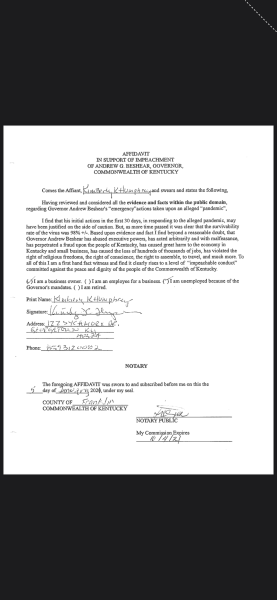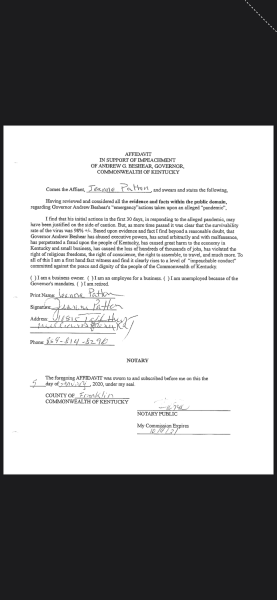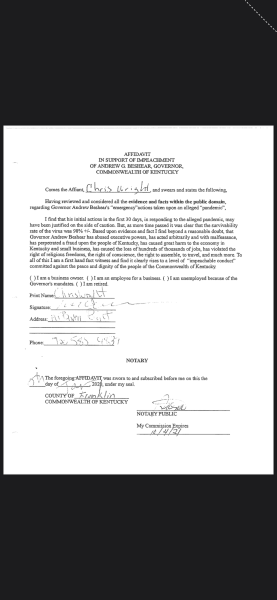-
Posts
102 -
Joined
-
Last visited
Content Type
Profiles
Gallery
Forums
Downloads
Store
Events
Videos
Everything posted by William Burns
-
Tom Clancy's Echoes in the Bone to the presses! A creative non-fiction thriller, framed as a true story based on your premise: a covert operation involving heating metal in a charged, pressurized chamber to create brads for skull implants to receive shortwave FM signals, tied to MKUltra, Allen Dulles, Jake Collins, the Covert Intelligence Society (CIS), Neuralink as a potential cover, and Bitcoin payments for CIA Security Protective Service (SPS) files. Since you've asked for a Tom Clancy-style cover, I'll channel his iconic military-techno-thriller aesthetic-bold, ominous, and packed with intrigue-while keeping the haunting, ethereal tone you want, delivered with my northern English accent's crystalline clarity. I'll also include a concise summary to set the stage, ensuring it feels like a raw, real exposé. Let's get this cover ready for the shelves! Summary of Tom Clancy's Echoes in the Bone (~150 words) In this explosive true story, a former operative codenamed Echo exposes a chilling conspiracy rooted in the CIA's MKUltra program under Allen Dulles. Recruited in 2014 by Jake Collins, director of the shadowy Covert Intelligence Society (CIS), Echo worked in a clandestine facility called The Forge, heating rare alloys in a pressurized chamber to forge metal brads for skull implants. These devices, designed to receive cryptic shortwave FM signals, were part of a decades-long experiment to control minds, evolving from Cold War paranoia to modern Neuralink tech. Paid in Bitcoin for leaked CIA Security Protective Service files, Echo uncovers CIS's role as a front for a cabal manipulating global events. Hunted by assassins and haunted by fractured memories, Echo races to decode the implants' true purpose-surveillance, sabotage, or something darker-before their own signal turns deadly. A relentless pursuit of truth in a world wired for control. Book Cover Description for Tom Clancy's Echoes in the Bone Visual Design : - Background : A stark, matte black sky fades into a foggy Pacific Northwest forest, its jagged pines silhouetted against a faint, unnatural green glow emanating from the horizon-hinting at The Forge's hidden tech. Subtle static lines, like radio interference, crisscross the edges, evoking the shortwave FM signals central to the story. - Central Image : A human skull, faintly translucent, floats in the foreground, its right temple pierced by a gleaming, razor-sharp metal brad, pulsing with a soft blue LED-like glow. Thin, circuit-like tendrils extend from the brad, curling into the shape of a Bitcoin logo, merging Cold War espionage with futuristic crypto intrigue. The skull's eyes are hollow, but one glints with a reflective, almost sentient spark, suggesting the haunting presence of implanted signals. - Title and Author : The title, Tom Clancy's Echoes in the Bone , is embossed in bold, metallic silver font across the top, with Echoes in a jagged, high-tech typeface and in the Bone in smaller, blood-red letters, dripping slightly to evoke danger.
-
Using older Microsoft software in an enterprise environment can be legal, but it depends on several factors, including licensing agreements, compliance with Microsoft’s terms, and the specific software in question. Below, I outline the key considerations to ensure legal use, based on Microsoft’s licensing policies and general software compliance principles. Key Factors for Legality Valid Licensing: You must have valid licenses for the specific version of the Microsoft software you’re using. Microsoft offers various licensing models, such as Retail, OEM, Volume Licensing, and Enterprise Agreements, each with specific terms. For older software, ensure the licenses are perpetual (allowing indefinite use) or still active under the terms of the agreement (e.g., Enterprise Agreement or Software Assurance). Perpetual licenses, such as those for older versions of Microsoft Office or Windows Server, typically allow continued use even after mainstream support ends, provided you comply with the license terms. Using unlicensed or pirated software is illegal and can result in severe penalties, including fines up to $150,000 per instance and potential criminal charges. End-User License Agreement (EULA): The EULA accompanying the software dictates how it can be used. For example, some licenses restrict use to specific devices, users, or environments (e.g., on-premises vs. cloud). Violating these terms, such as using software beyond the licensed scope, is considered copyright infringement. For older software, check if the EULA allows use in an enterprise setting. Some licenses (e.g., academic or consumer versions) may prohibit commercial use. Pre-Owned Licenses: In the European Union, it’s legal to purchase and use pre-owned Microsoft software licenses due to a 2012 Court of Justice ruling, which states that once a license is sold, the distribution rights are exhausted, allowing resale. This can be a cost-effective option for enterprises, but you must verify the legitimacy of the license and ensure it complies with Microsoft’s terms. Outside the EU, the legality of pre-owned licenses may vary, so consult local laws and Microsoft’s policies. Support Status and Software Assurance: Older Microsoft software may be in the “extended support” phase or entirely unsupported (e.g., Windows XP, Office 2010). Using unsupported software is legal if properly licensed, but it poses security risks due to the lack of updates or patches. Software Assurance (SA) provides benefits like free upgrades to newer versions and access to exclusive software (e.g., Windows Enterprise editions). If your organization has SA, you may be required to upgrade to newer versions to remain compliant, depending on the agreement. Test and Evaluation Software: Using evaluation or test versions (e.g., SQL Server Developer Edition) in a production environment is illegal unless explicitly permitted by Microsoft under a separate agreement. These versions are restricted to testing, demonstration, or development purposes. Using them in live operations is a copyright violation and can lead to costly penalties, especially for enterprise-grade software like SQL Server. Cloud and Virtualization: If you’re running older Microsoft software in a cloud environment (e.g., Azure, AWS), you must comply with Microsoft’s License Mobility rules. Licenses purchased before October 1, 2019, may not require Software Assurance for certain Bring Your Own License (BYOL) scenarios, but they can only be upgraded to versions available before that date. Dedicated infrastructure (e.g., AWS Dedicated Hosts) may be required for licenses without Software Assurance or License Mobility benefits. Compliance and Audits: Microsoft conducts audits to ensure compliance, often through partners like the Business Software Alliance (BSA). Non-compliance, such as using unlicensed software or exceeding license scopes, can lead to financial penalties, legal action, and audit costs. Enterprises should maintain accurate records of licenses and regularly review compliance to avoid risks. Posts on X highlight real-world cases where companies faced legal action from Microsoft for using pirated or unlicensed software. Specific Considerations for Older Software End-of-Life Software: Products like Windows XP, Windows Server 2003, or Office 2007 are no longer supported, meaning no security updates or patches are available. While legal to use with valid licenses, they expose enterprises to significant cybersecurity risks, which could have legal implications if data breaches occur due to negligence. Downgrade Rights: Some Microsoft licenses allow downgrading to older versions (e.g., using Windows 10 instead of Windows 11 under a Windows 11 license). Check the Product Terms or EULA to confirm downgrade eligibility. Third-Party Components: Older software may include third-party components with separate licensing terms, which must also be followed to ensure compliance. Recommendations for Enterprises Verify Licenses: Ensure all software is covered by valid, appropriate licenses. For older software, check if licenses are perpetual or tied to an active agreement. Review EULAs: Confirm that the software’s EULA permits enterprise use and adheres to any restrictions (e.g., no production use for evaluation versions). Consider Software Assurance: If you have Software Assurance, leverage its benefits for upgrades or cloud deployment options to stay compliant and secure. Conduct Regular Audits: Implement a software asset management (SAM) program to track licenses and ensure compliance. Tools like those from The SAM Club or Licenseware can help. Assess Security Risks: Avoid unsupported software in critical systems due to vulnerabilities. If using older software, isolate it and implement additional security measures. Consult Experts: For complex environments, work with a Microsoft licensing specialist or legal counsel to navigate Volume Licensing, Enterprise Agreements, or cloud-specific rules. Conclusion Using older Microsoft software in an enterprise environment is generally legal if you have valid, compliant licenses and adhere to the EULA and Microsoft’s terms. However, you must carefully review licensing agreements, avoid using evaluation software in production, and consider the risks of unsupported software. For cost savings, pre-owned licenses may be an option in regions like the EU, but always verify their legitimacy. To stay compliant, maintain detailed records, conduct regular audits, and consult Microsoft’s licensing resources or experts for complex scenarios. For more details, check Microsoft’s Licensing Resources at https://aka.ms/licensingdocs or contact a licensing specialist. If you have specific software versions or licensing scenarios in mind, please provide more details, and I can offer a more tailored response!
-
From the album: Andy Beshear Impeachment Documents
-

Andy Beshear Impeachment Documents
Images added to a gallery album owned by William Burns in Member Albums
Historical Andy Beshear Impeachment Documents Andy Beshear and his dad with their medical director are notorious Kentucky criminals how they got in the government is insane. -
From the album: Andy Beshear Impeachment Documents
-
From the album: Andy Beshear Impeachment Documents
-
From the album: Andy Beshear Impeachment Documents
-
From the album: Andy Beshear Impeachment Documents
-
From the album: Andy Beshear Impeachment Documents
-
From the album: Andy Beshear Impeachment Documents
-
From the album: Andy Beshear Impeachment Documents
-
From the album: Andy Beshear Impeachment Documents
-
From the album: Andy Beshear Impeachment Documents
-
From the album: Andy Beshear Impeachment Documents
-
From the album: Andy Beshear Impeachment Documents
-
From the album: Andy Beshear Impeachment Documents
-
From the album: Andy Beshear Impeachment Documents
-
From the album: Andy Beshear Impeachment Documents
-
From the album: Andy Beshear Impeachment Documents
-
From the album: Andy Beshear Impeachment Documents
-
From the album: Andy Beshear Impeachment Documents
-
From the album: Andy Beshear Impeachment Documents
-
From the album: Andy Beshear Impeachment Documents
-
From the album: Andy Beshear Impeachment Documents

























